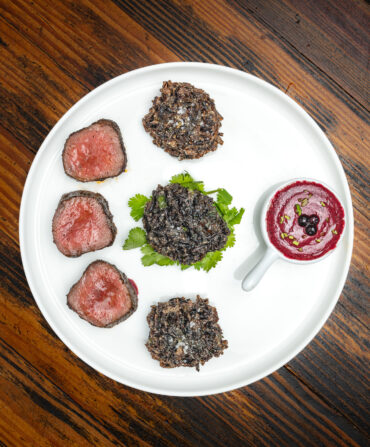Rule one for making Frogmore Stew: relax.
The recipe is a forgiving one; freshness and taste trump ingredient specifics and measuring cups. And while you’re likely to get a different version from every good cook, the framework of the dish remains the same. Frogmore Stew is a one-pot mix—a “boil”—of the Lowcountry’s peak summer offerings. “You can’t do much more than find the best ingredients and make them sing,” says Mike Lata, chef and co-owner of FIG (Food Is Good) in Charleston, South Carolina. The chef uses fresh local shrimp, preferably the white variety, with the heads still on (brown shrimp will do in season but definitely never frozen). He adds tender sweet corn and tiny heirloom new potatoes—German Butterball (deep yellow), All Blue (brilliantly purple), or Rose Finn Apple fingerling (red skin and gold interior) are favorites—because they cook up creamier.
Although many recipes call for blue crab, Lata adds stone crab claws. “I don’t mind picking the meat from blue crabs,” he says. “But it’s easier to get the meat out of a stone crab claw.” Once again, local rules. “Most people don’t realize that we get stone crabs out of the Charleston Harbor. Soon after the crabs are pulled from the water, we get a phone call: Do we want them or not? Of course, we do, and before long a sack arrives.”
The original recipe for Frogmore Stew, which has its roots in Creole-like Gullah cooking, is credited to Richard Gay of Gay Fish Company, located in the community of Frogmore on St. Helena Island, the heart of Gullah culture in the Sea Islands off the coast of South Carolina and Georgia. But the “stew” part is misleading. Unlike the one-pots of some great port cities—like bouillabaisse in Marseille or cioppino in San Francisco—Frogmore Stew is drained from its cooking liquid, transferred to a platter (or sometimes just spread out on a newspaper-covered picnic table), and eaten with your hands. Serve it with a variety of dipping and spicing condiments and all the Southern hospitality you can muster.








